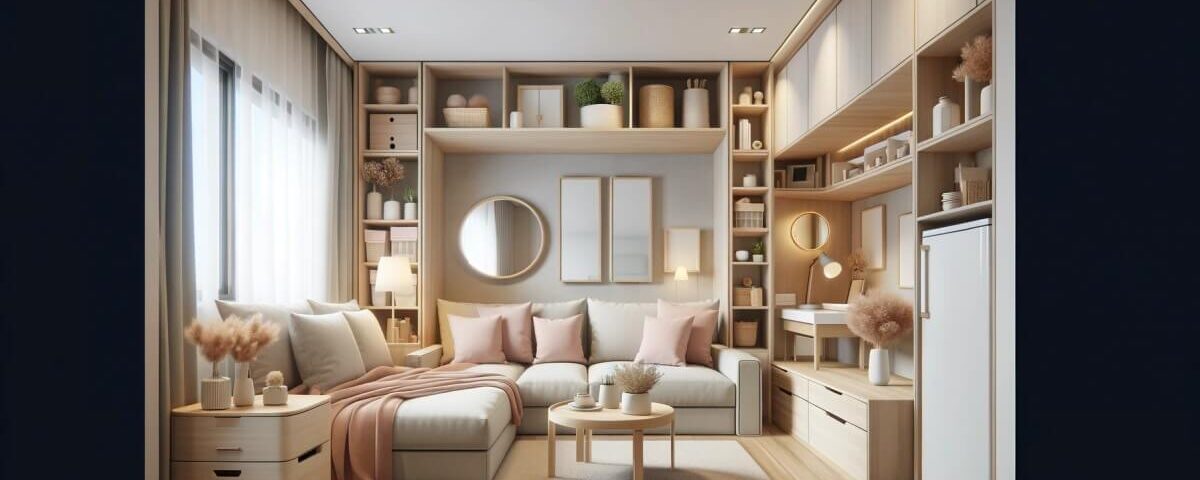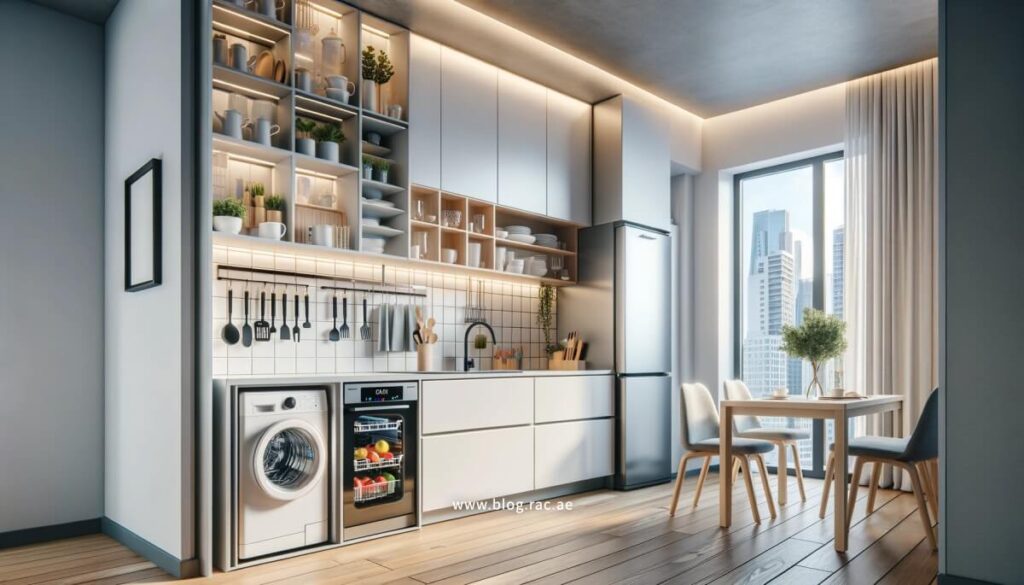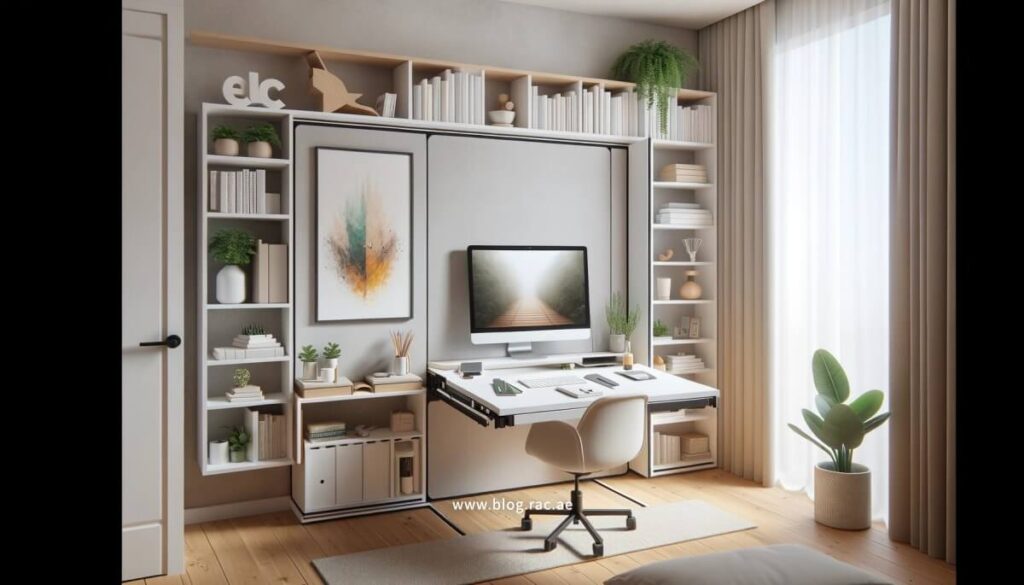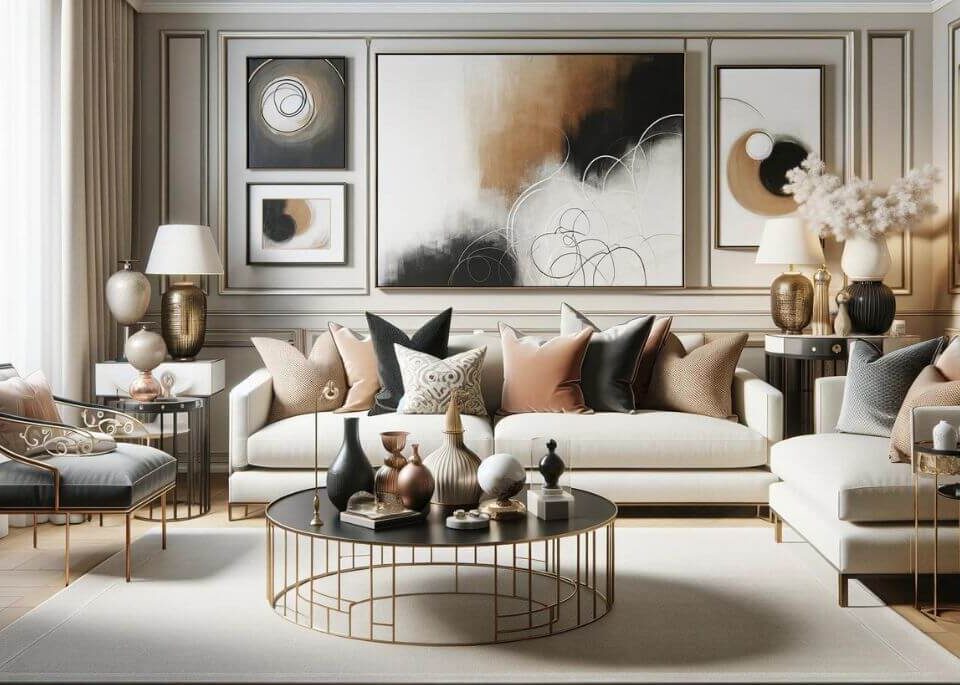
Bringing History Back to Life: Restoration of a Heritage Building
March 14, 2024
Unlocking the Secrets of Dreamy Home Design: Expert Tips & Ideas
March 16, 2024Embracing Compact Living: Innovative Strategies for Enhancing Small Space Functionality

In today’s urban environments, the concept of spacious living has evolved. Compact living quarters demand ingenious approaches to design and organization, challenging the traditional notions of what it means to “live large.” This guide delves into transformative design strategies that promise not only to optimize the limited space but also to elevate the living experience. Through a blend of smart design and modern innovations, small spaces can be reimagined into expansive, functional habitats that cater to all aspects of daily life.
Table of Contents
Navigating the Challenges of Limited Square Footage
Compact living spaces present unique obstacles, from the struggle to store personal items neatly to the task of distinguishing areas for diverse activities within a confined layout. These physical limitations often impact one’s sense of well-being, making an effective layout and organization paramount. Acknowledging these hurdles is the foundational step toward devising effective solutions that enhance livability and spatial efficiency.
Core Design Concepts for Compact Spaces
Crafting an inviting small space revolves around three foundational concepts: Dual-purpose design, Cohesive aesthetics, and Simplified living.
- Dual-purpose Design: This approach emphasizes the utility of elements that fulfill more than one function. Examples include a desk that doubles as a dining table, or storage solutions cleverly integrated into furniture pieces.
- Cohesive Aesthetics: A uniform design theme across the space can significantly impact the perception of size, promoting a seamless transition from one area to another. This might involve consistent color schemes or the strategic use of lighting to enhance spatial perception.
- Simplified Living: Embracing simplicity in both decoration and clutter management is vital. Selecting items that are both functional and contribute to the overall aesthetic can help maintain order and spaciousness.

Revolutionary Storage Innovations
Mastering the art of storage in small spaces is critical. Innovations in storage, such as overhead compartments or furniture with built-in storage capabilities, allow for a clutter-free environment. Furniture that can adapt to different needs or fold away when not in use represents the forefront of design, blending functionality with space efficiency.
Leveraging Light and Color Dynamics
The strategic use of light and color can transform the feel of a small space. Maximizing exposure to natural light, coupled with the use of reflective surfaces, can brighten and open up a room. Choosing a color palette that enhances the sense of openness, with occasional vibrant accents for character, plays a crucial role in visually expanding the space.
Effective Space Division Strategies
Creating “zones” for various activities within a small area is essential for functional multipurpose living. Solutions range from temporary setups, like movable panels, to more fixed structures, such as bookcases or glass partitions. The arrangement of furniture can also serve as a subtle divider, helping to segment the space naturally without the need for physical barriers.
Smart Living through Technology
In the realm of compact living, technology offers smart solutions that enhance functionality. Innovations in compact and multifunctional appliances, combined with home automation systems, provide convenience and flexibility. Technologies that save space, such as ceiling-mounted projectors or retractable screens, contribute to the multifunctionality of living areas.
Inspiration from Transformation Successes
The journey to optimizing small spaces is illuminated by real-world examples. Success stories of transformed living quarters not only serve as a source of inspiration but also offer practical insights into navigating design challenges. These narratives highlight the inventive spirit and personal touch that turn limited spaces into bespoke living environments.

Accessible Projects for Personalized Spaces
Introducing DIY projects and cost-effective tips empowers individuals to personalize their small living areas creatively and affordably. Crafting unique storage solutions or repurposing items for new uses fosters a sense of ownership and ingenuity, making the most of every square inch.
Key Takeaways: Enhancing Compact Living through Innovative Strategies
Compact living, driven by the need for efficient space utilization in urban environments, is transforming how we approach small space design. By integrating dual-purpose design, cohesive aesthetics, and simplified living, small areas can be optimized to provide both functionality and comfort. Innovations in storage and technology further enhance these spaces, making them more livable and organized. Real-world success stories and DIY projects inspire creative solutions, demonstrating that limited space does not restrict the richness of the home experience. Embracing these strategies invites a reimagining of compact living, proving that with the right approach, small spaces can offer expansive living experiences.
Conclusion
The essence of living expansively in a compact space lies in strategic design, innovative solutions, and a creative mindset. By applying principles of dual-purpose design, cohesive aesthetics, and simplified living, and by embracing the latest in storage and technology, small spaces can be transformed into inviting, functional environments. This exploration encourages a reimagining of compact living, inviting you to contribute your own discoveries and strategies for maximizing small space potential. Together, we can redefine the boundaries of compact living, proving that a limited footprint does not constrain the richness of the home experience.
FAQs
1. What is compact living?
Compact living refers to the practice of optimizing small living spaces through innovative design and organization to maximize functionality and comfort.
2. Why is compact living becoming more popular?
Urban environments with limited space are driving the need for efficient use of living areas, making compact living an appealing solution for modern lifestyles.
3. What are the core design concepts for small spaces?
The core concepts include dual-purpose design, cohesive aesthetics, and simplified living, which collectively enhance the functionality and visual appeal of compact spaces.
4. How does dual-purpose design work in small spaces?
Dual-purpose design involves using elements that serve multiple functions, such as a desk that also functions as a dining table or furniture with built-in storage.
5. Why is cohesive aesthetics important in compact living?
A cohesive design theme creates a seamless transition between different areas of a small space, making it appear larger and more organized.
6. What are some innovative storage solutions for small spaces?
Innovative storage solutions include overhead compartments, furniture with built-in storage, and adaptable furniture that can be folded away when not in use.
7. How can light and color dynamics enhance small spaces?
Maximizing natural light, using reflective surfaces, and choosing a color palette that promotes openness can make a small space feel brighter and more expansive.
8. What are effective strategies for dividing space in a compact area?
Effective space division can be achieved using movable panels, bookcases, glass partitions, or strategic furniture arrangement to create distinct zones for various activities.
9. How can technology improve compact living?
Technology enhances compact living through multifunctional appliances, home automation systems, and space-saving innovations like ceiling-mounted projectors and retractable screens.
10. What are some real-world examples of successful small space transformations?
Real-world examples showcase inventive design solutions and personalized touches that optimize small spaces, offering inspiration and practical insights for similar projects.
11. How can DIY projects contribute to compact living?
DIY projects enable individuals to create unique storage solutions and repurpose items, adding a personal and creative touch to their small living areas.
12. What is the role of simplified living in compact spaces?
Simplified living involves reducing clutter and selecting functional items that also enhance the overall aesthetic, contributing to a more organized and spacious environment.
13. How can one create a compact home office?
Creating a compact home office involves using space-saving furniture, multifunctional desks, and smart storage solutions to maximize efficiency in a small area.
14. What are the benefits of compact living?
Benefits include reduced living costs, easier maintenance, and a more efficient use of space, leading to a more sustainable and organized lifestyle.
15. How can small spaces be reimagined to feel more expansive?
Small spaces can be reimagined by applying strategic design principles, embracing innovative storage solutions, and incorporating smart technology to enhance functionality and visual appeal.

